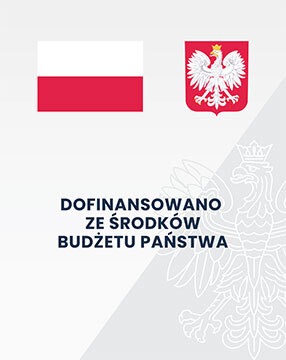OD STATYSTYKI DO EWALUACJI BIBLIOTEK
Teresa Szmigielska
Afiliacja: Biblioteka Sejmowa, Polska
Abstrakt
W artykule przedstawiono historię wybranych metod ewaluacji bibliotek akademickich od pierwszej połowy XVIII wieku do roku 2008. 2008. Autor odnosi się do publikacji często cytowanych w bibliografiach specjalistycznych, jako istotnych dla tego tematu. Dokonano analizy piśmiennictwa w celu wybrania najważniejszych tematów badawczych w aspekcie historycznym. Omówiono rozwój badań ilościowych w Stanach Zjednoczonych oraz ich wpływ na kraje europejskie.
Słowa kluczowe
Biblioteki naukowe; ewaluacja; wskaźniki funkcjonalności
Deskryptory Biblioteki Narodowej
1801-1900; 1901-2000; 2001-; Biblioteki naukowe; Badania ilościowe; Badania jakościowe; Dane statystyczne; Ewaluacja; Historia; Normalizacja; Normy; Statystyka; Europa; Stany Zjednoczone (USA);Bibliografia
BalbiA.: Essai Statistigue sur les Bibliothegues de Vienne. Vienne, Frederic Volke, 1835 Słatisłical Essay ofthe Libraries of Vienna and the World. Jefferson, North Carolina,McFariand 1986, przeł. Larry Barr i Janet L. Barr.
Gerouid J. T: >4 plan for the compilation of comparative university and college library statistics. „The Library Journal" s. 761-763. [oniine]. [dostęp; 16.01.2008]. Dostępny w World Wide Web;
Austen W.; Efficlency In College and University Library Work. „Library Journal", nr 86, s. 566-569.
Williamson C. C.; Tralning for Library Service. A Report Prepared for the Carnegie Corporation ofNew York, New York, Merrymount Press.
Gerouid J. T; The College Library Building: Its Planning and Eguipment. ..New York. Scribners", s. 31.
RiderF.; Library Cost Accounting. „The Library Ouarterly”, nr 4, s. 331-381.
Downs R. B.; Uniform Statistics for Library Holdings. „The Library Ouarterly", nr 16, s. 3-69.
Frarey C. J,: Studies of Use ofthe Subject Catalog: Summary and Evaluation. [W:] Subject Analysis of Library Materials. Pod red. M. F. Tauber, New York: Columbia University, School of Library Services, s. 147-166.
Bush G. C., GALLIHER H. R, MORSE P. W.: Atłendance and Use ofthe Science Library at MIT. „American Documentation", s. 87-109.
Piternick G.: Library growth and academic guality „College and Research Libraries”, nr 24, s. 223-329.
Dunn O. C., Seibert W. R, Scheuneman J. A.: The Past and Likely Futurę of 58 Research Libraries, 1951-198. A Stałlstical Study of Growth and Change. University Libraries and Audio Visual Center, Purdue University, West Layfayette, Indiana.
Fussier H. H., Simon L..' Patterns in the use ofbooks in large research libraries. Chicago, The University of Chicago Press.
Tagliacozzo R., Kochen M.; Informatlon-Seeking Behavlor of Catalog Users. „Information Storage and Retrieval”, nr 6, s. 363-381.
Evans E., Borko H., Ferguson R: Review of criterla used to measure library effectiveness. „Bulletin ofthe Medical Library Association”, nr 1, 102-110. [oniine]. [dostęp: 06.
, Dostępny w World Wide Web: <http://www.pubmedcentral.nih.gov/articlerender. fcgi?artid=198632>
Orr R.: Measuring the goodness of library services: a generał framework forconsidering. Journal of Dokumentation” nr 29, s. 315-332.
Broadus R. N.: The Application of Citation Analyses to Library Collection Building. „Advances in Librarianship”, t. 7, s. 299-335. Galvin, T. J., Kent, A.: Use of a University Library Collection: A Progress Report on a Pittsburgh Study. „Library Journal” nr 102 , s. 2317-2320.
Evans A., Mirsky P. S., Victoria M. J. de: Evaluation ofa library program in a Carnegie model area health education center. „Bulletin Med. Library Assocation” nr 66, s. 190-199.
Katz F. M.: Directives pour evaluer un programme de formation des personnels de sante, Genćve, OMS.
Schad J. G,: Pittsburgh university studies of collection usage: A symposium. „Journal of Academic Librarianship” nr 5, s. 60-70.
Kent A. i in.: Use of library materials. The University of Pittsburgh study. New York, Marcel Dekker Inc.
Molyneux R. E.: An Examination ofthe Growth of Academic Libraries in the United States. 1972/73-1981/82. Unpublished dissertation, University of North Carolina, Chapel Hill.
Kendon S.: Introduction, ARL Statistics, 1983-1984. Washington, Association of Research Libraries, s. 4-7; oraz tego samego autora: ARL Statistics, 1992-1996: A Guide to the Machine-Readable Version ofthe ARL Statistics. Washington, Association of Research Libraries 1996.
Sridhar M. S.: A case study of lent-out use ofa speciai library. Library Science With a Slant to Documentation nr 22 s. 19-34
Childers T. A., Van HOUSE N. A.: Labor Market Segmentation and Librarian Salaries. „The Library Ouarterly” nr 2, s. 171-89.
House Van N. A. i in.: Output measures forpublic libraries. Chicago, Association of College and Research, Libraries, American library Association.
Goodall D. L.: Performance measurement: A historicalperspective. „Journal of Librarianship” 1988, nr 2, s. 128-144.
Klempin E.: Recommendation concerning the International standardization of library statistics der Unesco und die bibliotheksstatistischen Arbeit in der DDR. „Zentralbl. Bibl.-Wes”, s. 49-55.
Powell, R. R.: The relationship of library user studies to performance measures. A review of the literature University of Illinois Graduate School of Library and Information Science Occasional Paper, nr 181. Champaign-Urbana, University of Illinois.
DeccacheA.: Pour mieux choisir son evaluation. Lićge, APES. Bonn G. S.: Collection Analysis in Modern Librarianship. „Collection Management”, s. 73-91.
Sridhar M. S: Studies on use oflibrary collecłions by scienłists, engineers and technicians. „Aglis Journal”, nr 4, s. 9-17. [online], [dostęp 16.03.2008]. Dostępny w World Wide Web: <http://eprints.rclis.org/archive/00012340/>
Winkworth J.: Performance indlcators forpolytechnic libraries. „Library Review”, nr 5, s. 23-41.
Lancaster W. F.: Evaluation as a management tool. „Public Library” nr 5, s. 289-294. 1991 Chacha R. N., Irving A.: An experiment in academic library performance measurement. „British Journal of Academic Librarianship”, nr 1, s. 16-26.
Childers T.: Measures of interlibrary reference. A manuał. Sacramento, California State LibraryFoundation.
Baker S. L, Lancaster F. W.: The measuremenł and evaluation of library services. Wyd. 2, Arlington, Information Resources Press, [wyd. pierwsze1977].
Lithgow S. D., MacDougall A.: Performance assessment, today’s confusion, tomorrow’s solution? „IFLA Journal”, nr4 , s. 371-378.
Lofgren H.: Priority and performance evaluation, a tool for libraries. „Australian Library Journal”, nr 1, s. 14-30.
Stephen R.: Library use of performance indicałors. „Library Revue”, nr 6, s. 22-36.
Carbone P.: Survey ofthe Development of Library Performance Measures in France. „INSPEL”, nr3,s. 196-198.
Lancaster F. W.: Ifyou want to evaiuste your library. Wyd. 2, Champaign, University of Illinois, s. 76-85, [wyd. pierwsze 1988].
Mike D., Revill D.: Towards the active collection: the use ofcirculation analyses in collection evaluatio. „Journal of Librarianship and Information Science”, nr 3, s. 149-157.
Shiao-Feng S., Lancaster F. W.: Evaluation ofexpert systems in reference service appHcations, „RQ” , vol. 35 , nr2 , s. 219-228.
Hernon P.,Altman E.: Service guality in Academic Libraries. Greenwood Publishing Group, [online]. [dostęp: 14.05.2008]. Dostępny w World Wide Web: <http://books.google.pl/ books?id= 3BXSV2Npt KQC&pg =PA15&source=gbs_toc_r&cad=0_0&sig=Z_uKsuLPXF0l_UZKojFnts1tQ_l>
Poll R., Boekhorst P.: Measuring Ouality; Performance Measurement in Libraries. Munichen, K. G. Saur, seria: IFLA Publications, nr 76, Mierzenie jakości: międzynarodowe zalecenia do pomiaru wykonania zadań w bibliotekach akademickich. Tł. Bolesław Rek, Bibliothecalia Wratislaviensia 2004, nr 7, s. 16.
U. S. Bureau of Education: Public Libraries in the United States of America. Washington, Government Printing Office, 1876. [online]. [dostęp: 15.01.2008]. Dostępny w World Wide Web:<http://fisher.lib.virginia.edu/lit3sites/ gerould/ tgsartcl.html>
Gram, J.: Six impossible things before breakfast. A multidimensional approach to measuring the value of libraries. [W:] Proceedings ofthe 3rd Northumbria International Conference on Performance Measurement, „Libraries and Information Services”, Newcastle upon Tyne 2000, s. 19-29. [online]. [dostęp: 17.04.2007]. Dostępny w World Wide Web: <http://www.alia.org.au/~jcram/ six_things.html>
Douglas R.: Performance measurement and performance indlcators. A selective bibliography. [online], [dostęp: 10.01.2008]. Dostępny w World Wide Web: <http://search-recherche.collectionscanada. ca/fed/searchResuIts.jsp? SourceQuery= &ResultCount=5&PageNum=1&MaxDocs=-&SortSpec=score+desc&Language=eng&
Sources= amicus&Sources=mikan&Sources=web&QueryText=Bibliography+series+%238>
HennenT. J.: Why we should establish a national system of standards. „Ąmer. Library", nr 3, s. 43-45.
Kyrillidou M.: Research library trends: arl statistics. „Journal of Academic Librarianship”, nr 6, s. 427-436; w wersji elektronicznej jako preprint Association of Research
Libraries, Washington, DC 2002. [online]. [dostęp: 12.08.2009]. Dostępny w World Wide Web: <http://www.arl.org/bm~-doc/jal99.pdf>
Ouinn B.: The McDonaldization of Academic Libraries? „College & Research Libraries”, nr 3, s. 248-261. [online]. [dostęp 14.05.2008]. Dostępny w World Wide Web:
LamyJ. P. Evaluer un service de reference, quelques outils. „Buli. Bibl. France", t. 46, nr4 , s. 82-88.
Żbikowska-Migoń A.: Karl Heinrich Frómmichen (1736-1783) and Adrian Balbi (1782- 1848). Thepioneers of biblio- andscientometrics. „Scientometrics”, 2001, vol. 52, no. 2, pp. 225-233.
Briand B., Buffeteau A., Cudelou J.-F. i in.: Indicateur de performance des services documentaire, l'experience d ’un groupe de professionnels de llnformałlon. „Documentaliste” nr 1-2, s. 26-33.
Hernon R: Ouality: New directions in the research. „Journal of Academic Librarianship” nr 28,5.224-231.
Hernon P., Dugan R. E.: An action plan for outcomes assessment in your library. Chicago, American LibraryAssociation.
Spohrer J. H.: Les bibliothegues universitaires franęaises et nord-americaines, prolegomćnes r une etude comparative. „Buli. Bibl. France”, nr 5 , s. 32-35.
Durrance J. C., Fisher K. E.; Determining how libraries and librarians help. „Library Trends” nr 51, s. 305-334. [oniine]. [dostęp: 15.04.2007]. Dostępny w World Wide Web; <http://www.ischool.Washington, edu/fisher/pubs/library. trends.2003.pdf>
Pol! R.: Impact/outcome measures for libraries. „Liber Ouarterly", nr 13, nr 3/4, s. 329-342. [oniine]. Dostępny World Wide Web: <http://liber.library.uu.nl/>
Reichmann G.: S/ze matters, Einfluss der Bibliotheksgrósse auf Bibliołhekskennzahlen am Beispiel von Fachhochschulbibliołheken. „Buch und Bibl.” nr 55 , s. 235-239.
Fett O. R: Impact - Outcome - Benefit. Ein Literaturberichł zur Wirkungsmessung fur Hochschulbibliotheken. Berlin, [oniine]. Dostępny w World Wide Web: <http://www.ib.hu-berlin.de/~kumlau/handreichungen/h142>
Hernon R, Dugan R. E.: Different perspectives on assessment and evaluation: The need to refine and link them. „Proceedings of the 5th Northumbria International Conference on Performance Measurement in Libraries and Information Services 2003”,
Northumbria University, s. 23-30. [oniine]. Dostępny w World Wide Web:
Fisher K. E.: LIS 579: Outcome evaluation. The Information School of the University of, Washington, dostlBEC. [oniine], [dostęp: 15.08.2008]. Dostępny w World Wide Web: <http://ibec.ischool.Washington, edu/default 1024. aspx?cat=Home&b=y>
Kucianova A.: Uplatnienie noriem STN ISO 2789 a STN ISO 11620 pri kvantifikovani ćinnosti kniźnic i informaćnych sysłemov. „Kniźnica” nr 5, s. 220-226.
Brophy R: Narrative-based librarianship. [W:] The area of Information and social communication. Festschrift for Professor Wanda Pindlova, „Studies in Library and Information Science”, vol. 10, Kraków, Jagiellonian University Press 2004, s. 188-195.[oniine]. [dostęp:10.01.2007]. Dostępny w World Wide Web: <http://www.cerlim.ac.uk/
projects/nbl_brophy.pdf.>
Poll R.: Kann man die „Wirkung” von Bibliotheken messen? Internationale Projekte zu „impacV‘ und „outcome" in óffentllchen und wissenschaftiichen Bibliotheken. „Zeitschrift fur Bibliothekswesen und Bibliographie" s. 357-369;
Durrance J, C., Fisher K. E., Hinton M. B,: How Libraries and Librarians Help. A Guide to Identifying User-Centered Outcomes. Chicago, American Library Association.
Poll R.: Was dabei herauskommt: Wirkungsforschung fur Bibliotheken. „Zeitschrift fur Bibliothekswesen und Bibliographie” nr 2-3, s. 59-70.
Elements methodologigues d ’evaluation de ractivite de documentation dans les comites d'education pourla sante, [oniine]. [dostęp: 16.05.2008]. Dostępny w World Wide Web: <http://craes-crips.com/pub/fixes/ 21_elements_devaluation_activite_doc_2006.pdf>
Poll R., Payne R: Impact measures for libraries and Information services. „Library HiTech”, nr 24/4, s. 547-562. [oniine]. [dostęp: 04.2007]. Dostępny w World Wide Web:<http://conference.ub.uni-bielefeld.de/2006/proceedi ngs/payn_poll_final_web.pdf>.
Xalter S.: Der„Bibliotheksindex“ (BIX) fur wissenschaftiiche Bibllotheken - eine kritische Auseinandersetzung. BIX - Bibliotheksindex. [oniine]. [dostęp; 20.08.2007], Dostępny w World Wide Web: <http://w210.ub.unituebingen.de/dbt/volltexte/2006/2440/pdf/BIX_OPUS_Tue_Xalter.pdf.>2007 Poll R., Boekhorst R: Measuring Ouality.; Performance Measurement in Libraries.Wyd. 2, Munich, K. G. Saur, seria: IFLAPublications, nr 127.
ISO 11620:2008 Information and documentation. Library performance indicators. Molyneux R. E.: The Gerould Stałistics, 1907/1908-1961/1962, second edition, Anhistohcal compilation ofdata from academic libraries in the United States and Canada.[oniine]. [dostęp: 15.02.2008]. Dostępny w World Wide Web:
Afiliacja: Biblioteka Sejmowa, Polska
Biogram:
CC BY-NC-ND 4.0 Uznanie autorstwa - Użycie niekomercyjne - Bez utworów zależnych 4.0 Międzynarodowe





